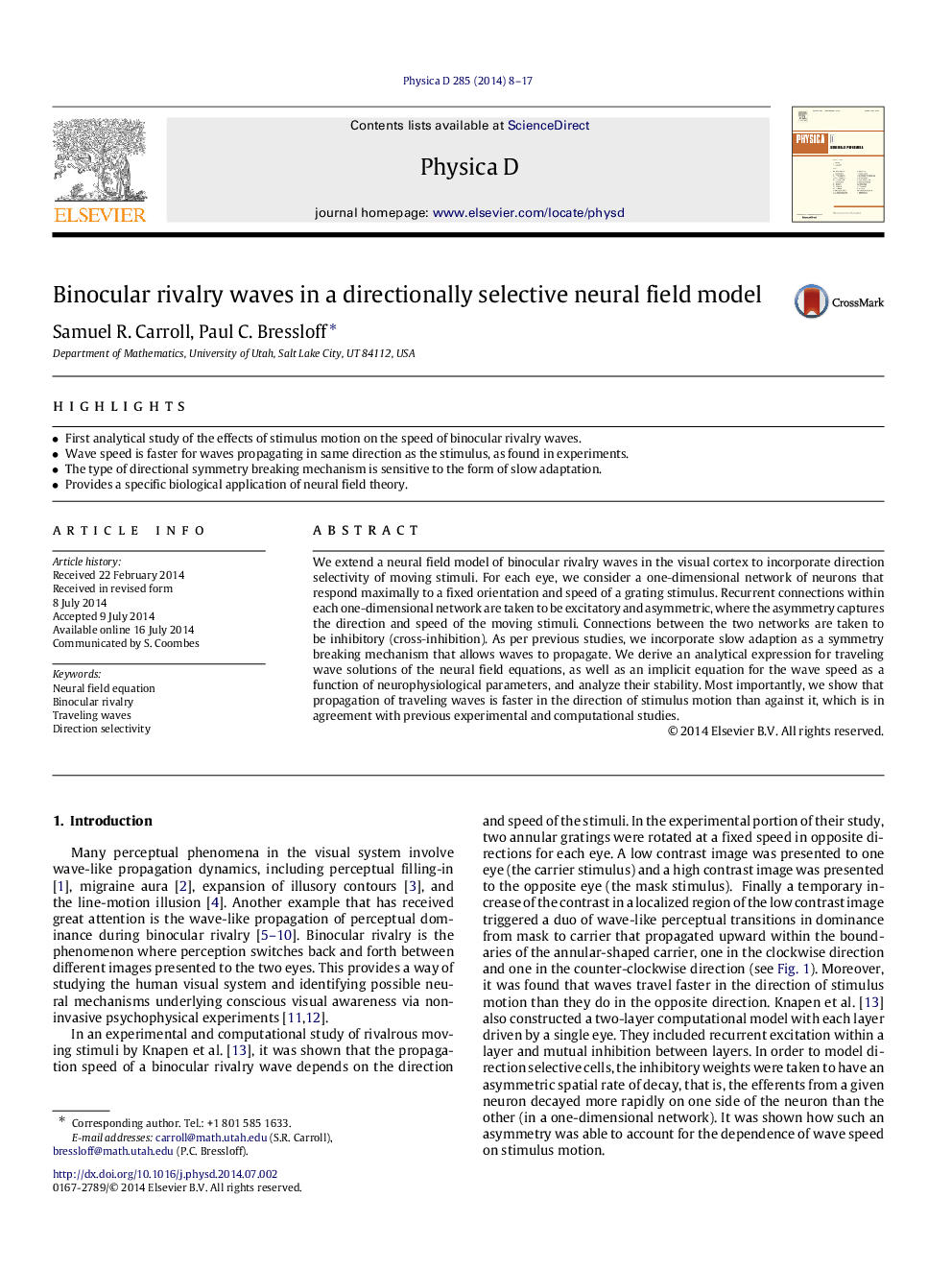| Article ID | Journal | Published Year | Pages | File Type |
|---|---|---|---|---|
| 1898379 | Physica D: Nonlinear Phenomena | 2014 | 10 Pages |
•First analytical study of the effects of stimulus motion on the speed of binocular rivalry waves.•Wave speed is faster for waves propagating in same direction as the stimulus, as found in experiments.•The type of directional symmetry breaking mechanism is sensitive to the form of slow adaptation.•Provides a specific biological application of neural field theory.
We extend a neural field model of binocular rivalry waves in the visual cortex to incorporate direction selectivity of moving stimuli. For each eye, we consider a one-dimensional network of neurons that respond maximally to a fixed orientation and speed of a grating stimulus. Recurrent connections within each one-dimensional network are taken to be excitatory and asymmetric, where the asymmetry captures the direction and speed of the moving stimuli. Connections between the two networks are taken to be inhibitory (cross-inhibition). As per previous studies, we incorporate slow adaption as a symmetry breaking mechanism that allows waves to propagate. We derive an analytical expression for traveling wave solutions of the neural field equations, as well as an implicit equation for the wave speed as a function of neurophysiological parameters, and analyze their stability. Most importantly, we show that propagation of traveling waves is faster in the direction of stimulus motion than against it, which is in agreement with previous experimental and computational studies.
